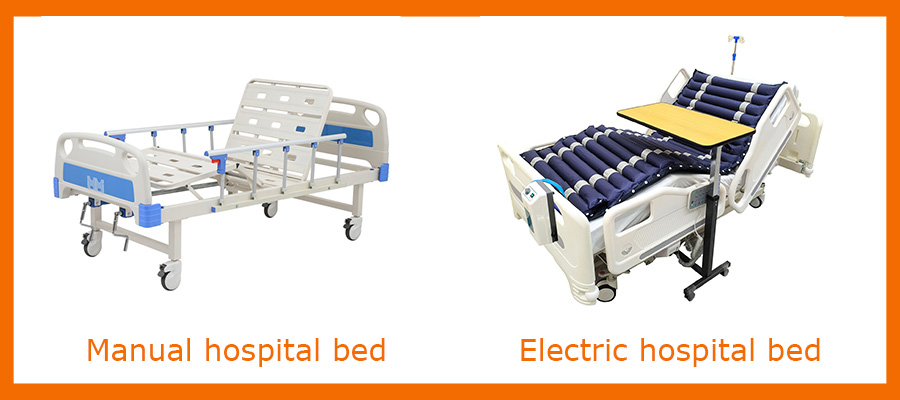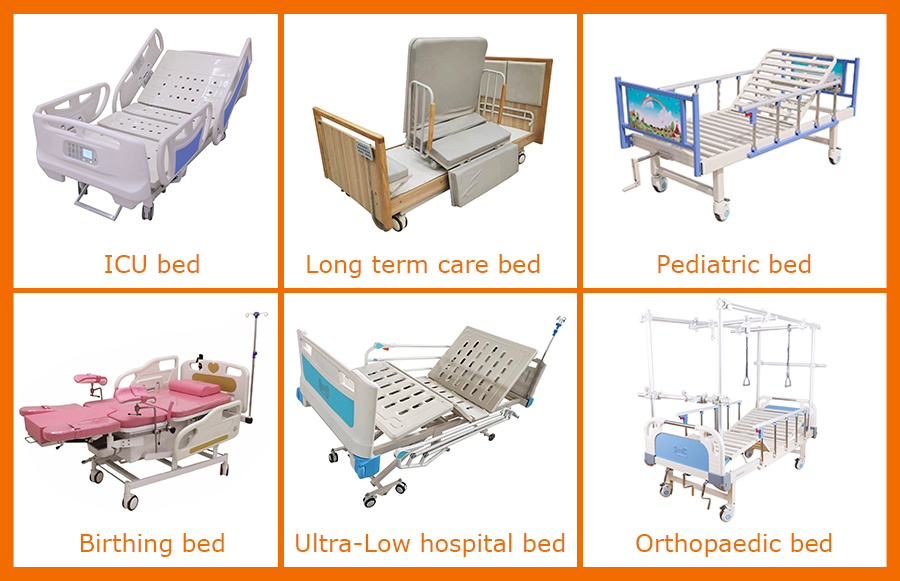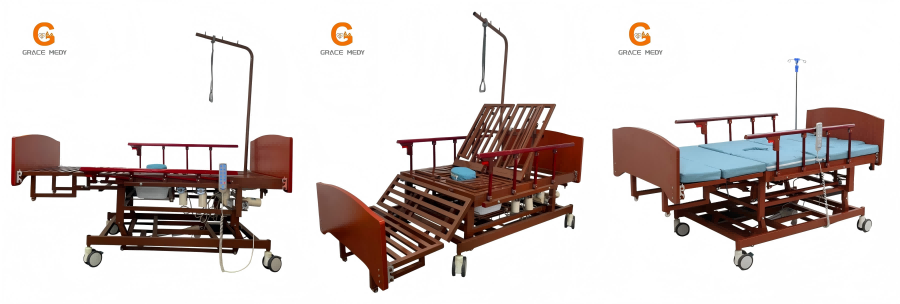Overview of Hospital Beds with Mattresses
From my experience, hospital beds with mattresses are essential for taking care of patients. You will find them in hospitals, private homes, and long-term care facilities.
I believe these beds are quite different from regular beds. They have much stronger frames built for safety and support. This helps people who can’t move easily or have specific health conditions. I also recommend checking the sizes. Most hospital beds come in various sizes to fit different patients and room layouts.
I think the mattress is a key part of the bed system. The mattresses have a special design to make patients more comfortable. I’ve seen how they help lower health risks like painful pressure sores. They provide support to specific body areas and spread out the pressure. The bed frame and the mattress work together. I feel this combination is what keeps patients safe, comfortable, and protected as they get better or need extended care.
Different Types of Hospital Beds
There are many kinds of hospital beds. Each one is made for different patient needs and situations. I find that knowing the types helps you pick the right bed. This choice affects safety, comfort, and value.
Manual Hospital Beds
You adjust manual hospital beds with hand cranks. I often see them in basic care settings. They are a good choice if you’re on a budget. Keep in mind, they do require more physical work to adjust the head, foot, or height.
Semi-Electric Hospital Beds
These beds mix manual and electric parts. You usually adjust the height by hand. The backrest and footrest, however, can be raised or lowered with an electric control. From my experience, this offers a good mix of convenience and price.
Fully-Electric Hospital Beds
I think fully-electric models are the most convenient. Electric motors power all adjustments for height, back, and legs. This makes them simple for both patients and caregivers to use.

Specialized Hospital Beds
ICU Beds
ICU beds are for very sick patients. They have full electric adjustments and can connect to patient monitors. Many have emergency features, like a CPR button. These beds truly help medical teams give intensive care.
Long-Term Care Beds
For patients with chronic conditions or for older adults, I recommend long-term care beds. They offer many position changes and have a comfort-first design. The mattresses often have removable covers. This helps prevent bedsores from developing over long periods.
Bariatric Beds
Bariatric beds have stronger frames and are wider. They can support patients who weigh up to 350–450 kg. These beds use special mattresses for extra strength. I suggest them for the added support and comfort they provide.
Pediatric Beds
These beds are made just for children. You’ll often find them with full-length side rails. I love that they have cheerful, cartoon-inspired designs. This helps young patients feel safe and relaxed during their hospital stay.

Birthing Beds
Birthing beds are made for labor and delivery. They can be moved into many positions. They also have parts you can remove to support mothers through the childbirth process.
Ultra-Low Beds
I suggest ultra-low beds for patients who are at a high risk of falling. You can lower these beds very close to the floor. This lessens the chance of injury if a patient rolls or slips out of bed.
Orthopaedic Traction Beds
Orthopaedic beds are for patients who need skeletal traction. They have built-in frames and supports. These parts help with bone treatments and aid the recovery process.
Rehabilitation Beds
These beds help patients with their recovery exercises. They include special devices and accessories that assist with mobility training. I find these additions very useful for patient recovery.

Hospital Beds by Functional Capabilities
2-Function Hospital Beds: These let you adjust the backrest and footrest.
3-Function Hospital Beds: You can adjust the height, backrest, and footrest. I see these a lot in ICUs and emergency rooms.
5-Function Hospital Beds: These add forward and reverse tilt. This is called the Trendelenburg and Reverse Trendelenburg position. It helps position patients who need critical care or special mobility support.
A Guide to Hospital Bed Mattresses and Their Uses
From my experience, picking the right hospital bed mattress is key. It ensures patient comfort, helps prevent pressure injuries, and supports unique health needs. I find that different beds need specific mattress types to provide the right features and support.
Innerspring Hospital Bed Mattresses
Key Features: These mattresses have steel coils spread throughout. This setup gives firm support and lets air flow well.
Best For: I recommend these for general use. They are a good choice for patients who are not at high risk for pressure sores.
Benefits: Their design is familiar and the structure is firm. This helps patients stay cool and dry. In my opinion, these models are a great value. They are easy to find and are a common pick for basic care.
Foam Hospital Bed Mattresses
Key Features: Foam mattresses are made of foam layers. These layers shape to the body. This provides good comfort and spreads pressure out.
Best For: I suggest these for patients with slight movement problems. They also work well for anyone needing some pressure relief at home or in a hospital.
Benefits: These are lightweight and simple to handle. They usually cost less than other special types. Based on what I’ve seen, they reduce the risk of back pain and pressure sores. One thing to note is they have less airflow than innerspring types.
Alternating Pressure Hospital Bed Mattresses
Key Features: These mattresses have special air cells. The cells inflate and deflate in a cycle. This action shifts pressure points over and over.
Best For: I recommend these for high-risk patients. This includes people with almost no mobility or those who already have skin issues.
Benefits: They reduce constant pressure on one spot. This helps stop and treat bedsores and boosts blood flow. For instance, the Grace Medy Alternating Pressure Mattress can hold up to 500 lbs. It gives constant pressure relief with its many air bladders.
Multifunctional Palm Foam Medical Mattresses for Adjustable Beds
Key Features: I’ve found that Grace Medy’s multifunctional medical mattresses are made to fit adjustable hospital beds. This includes two-function, three-function, and five-function models.
Best For: These are perfect for patients who need to change bed positions often. This might be for comfort or to help with recovery. A good example is someone using a bed with head and leg adjustments.
Benefits: These mattresses feature sections at the back and legs that adjust. They work perfectly with different hospital bed controls. These special zones make the mattress more comfortable. They also give better support when a patient is moved or needs long-term care.
In my view, matching the right mattress to the bed frame is vital. It’s all about patient safety, comfort, and proper medical care. Each mattress type deals with different needs. Some focus on cost, others on comfort or flexibility. Some offer advanced skin protection. My final advice is to make sure the complete bed and mattress setup fits the patient’s specific situation.
